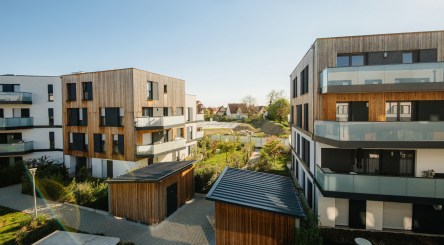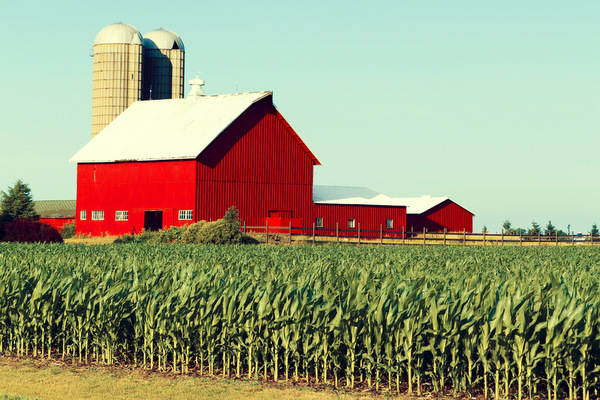Investors have set their sights on suburban and tertiary markets. Lenders are responding favorably to the trend. While banks will continue to keep one foot planted in major metros, many are following their trusted relationships to less familiar terrain outside of city limits. Sleepy secondary markets are waking up The shift began as a trend prompted by the pandemic but has continued at a steady clip through the highs and lows of COVID-19. This is particularly true in cities where major employers have transitioned to remote and hybrid models. Many white collar industries such as technology, consulting and legal have adapted more flexible work conditions. With zero or fewer days required for office attendance, employees have been exploring their housing options. Blake Hering, principal with Gantry Inc explains, “As these remote operating models adopted by many office users have taken root and grown following last year’s social distancing mandates, a generational shift valuing the lower cost of living, higher quality of life, and larger footprint domiciles available in secondary markets has clearly fueled the beginning of a new, robust cycle for regional markets outside the MSA domain.” Employees are venturing further from their workplace hubs to secondary and tertiary markets where their money likely goes farther: lesser-known markets may offer more square footage for their money and more outdoor space, housing trends that were revitalized during the pandemic. Lending follows the leader The migration is particularly evident in MSA markets such as Seattle, Wash., and Portland, Ore. in the Pacific Northwest. Investors are following demand to smaller markets such as Bend, Salem and Tacoma. “This shift is now rewarding experienced sponsors in what have become prioritized markets by offering access to a host of new lending sources that once only reserved their allocations for operators...
End of Urbanization?
New attention for suburbs
For years, 24-hour and 18-hour cities, and the live-work-play concept, have been mantras in commercial real estate. Suddenly, however, cities are facing a pandemic-driven exodus. Is this a temporary blip or the start of a long-term trend? COVID-19’s impact has been particularly deep in major metropolitan areas such as New York City, Los Angeles, Chicago and San Francisco office space, which have also seen sharp drops in apartment occupancy rates and rents as the city centers are largely shut down and residents shelter elsewhere. In Manhattan, for example, office buildings that were closed for months remain mostly empty upon re-opening, as employers avoid putting workers at risk and people avoid public spaces. Midtown streets that are typically teeming with tourists are nearly empty as Broadway and other entertainment venues remain shut. New York City’s story is being played out in city centers across the country. Not only do urban areas temporarily lack the jobs and cultural institutions that drew people there, but the crowds and closeness are suddenly an element to be feared rather than fascinate. Few if any saw this coming, as growth has coalesced in cities in recent years. The United Nations has forecast that 75 percent of the global population would live in cities by 2050, doubling their size, and the U.S. seemed to be headed in that direction. A recent study of the largest 30 U.S. metros by the George Washington University School of Business and Smart Growth America in conjunction with Yardi Matrix found that walkable neighborhoods encompassing office, housing, retail and entertainment grew faster and produced higher absorption and rent growth over the last decade than counterparts without that combination. During that time, 70 percent of the jobs created were in the top 50 U.S. metros. Corporations have been...
Agriburbia
Developing amidst farmland
The community garden just isn’t big enough anymore. And when it comes to creating a residential neighborhood that will embody sustainable practices, the local food movement, and love of open spaces, agriburbia has come forward as an exciting alternative. Never heard of it? Neither had I, until a few weeks ago. But just the name agriburbia instantly interested me. I pictured strip malls being razed for cornfields in the suburbs, a farm stand on every corner, organic, local-sourced salad on every dinner table. Impossible utopia? Not quite. Agriburbia, it turns out, is already thriving in numerous states around the nation. My research revealed experiments with the model in Virginia, Vermont, North Carolina, Idaho, Illinois, Georgia, Wisconsin, Colorado and California. It’s also catching on in Canada, where it’s the focus of an academic research effort. “The resulting agriburban zones, defined as suburban forms in which agriculture plays a significant role, are of increasing importance as a site of local food production, of affordable housing on the urban fringe, and of settlement regions for migrants from agrarian backgrounds,” notes the Agriburban Research Center at the University of Fraser Valley. The logic is simple: growing food in far-off places, and shipping it to grocery stores, only decreases quality and increases cost. Once upon a time in North America, we grew the produce and raised the animals we needed to live right in our own communities. As cities and suburbs grew fast and furious, farms were pushed further and further to the outskirts. The agriburbia movement aims to bring them back into view. The Urban Land Institute estimates that up to 200 such projects are developed or in progress. According to Agriburbia.com, there are 3,000 acres of such land in or under development and production. Imagine wandering out onto the back porch to be greeted not by a useless bed of roses, but a wholesale volume seasonal garden, cared for by communal effort and producing enough produce to feed not only the houses of the neighborhood, but to be sold within the surrounding community. Individual agriburbia models differ in how the agricultural space is integrated with residential housing. In some, residents can get actively involved on the farm – which is typically a mid-scale, commercially viable ag operation – and receive fresh food in trade for their labor. Don’t want to work? Not a requirement. You can purchase your produce and not perform manual labor. One exceptional example of the model takes place at Prairie Crossing in Grayslake, Illinois. Here, residents don’t participate in the farming activities, but the adjacent 100-acre farm, Sandhill Family Farms, produces food for a CSA (Community Supported Agriculture) share plan with 350 customers. Learning Farm activities introduce residents to small-scale farm and food production options they can implement in their own backyards. Demand for the lifestyle is evident. Prairie Crossing easily sold out all of its 359 homes and is now marketing 36 condominiums. It’s not a new community, and finds itself serving as a role model for up-and-coming agriburbia efforts around the nation. As one homeowner put it when speaking to “Midwest Living”: “I don’t look at Prairie Crossing as anything new…It’s a return to creating a community network of support that was part of American culture before World War II.” Would you consider life in an agriburbia community? What do you think are the most valuable aspects of the...



